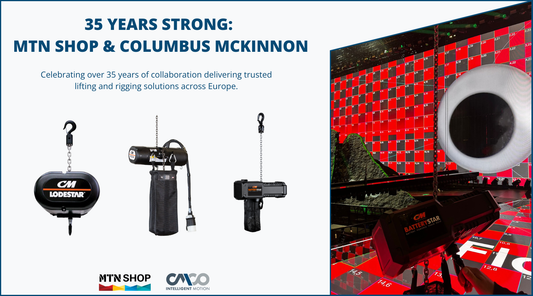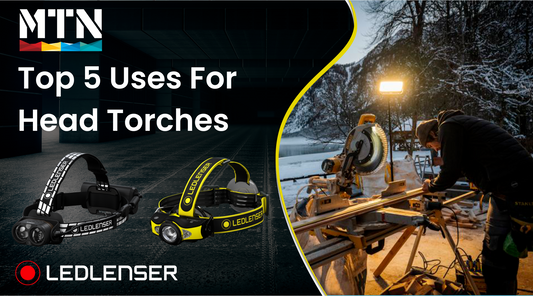5 Ratchet Strap Safety Tips (+7 FAQs)
Article
Ratchet straps, also known as lashing straps and tie-downs, are one of the most popular methods for securing cargo, especially when it comes to shipping. Therefore, much like wire rope slings, they are an important component to material handling.
As with all industrial material handling equipment, you must take proper care of tie-down straps to use them both safely and effectively. Any kind of damage to your straps can affect both its working load limit and breaking strength, putting both equipment and individuals at risk.
Here are 5 top tips + 7 FAQs of ratchet strap safety you need to know.
1. Use Ratchet Straps Properly
The ratchet strap is absolutely a piece of extremely effective equipment to support many different weights and cargo sizes when used properly. However, our specialists have seen many cases that lashing straps damage very quickly and seriously because of misuse. Worse still, it can cause road hazards.
-
Thread ratchet straps

- Step 1: Insert the loose end of the heavy-duty lashing straps into mandrel of the ratchet (fig.1)
- Step 2: Pull the strap through the slot of the mandrel, and make the strap tight by removing any slacks (fig. 2)
- Step 3: Move the ratchet handle back and forth to tighten the webbing (fig.3)
- Step 4: Lock the handle down after tightening (fig.4)
-
Release ratchet straps

- Step 1: Squeeze the webbing release bar
- Step 2: Open the ratchet 180 degrees (fig. 1) for webbing removal
2. Keep Ratchet Straps Well Contained
Improper storage can lead to irreparable damage that can shorten the working life of your strap.
There are a number of tips and tricks for storing ratchet straps to keep them protected, including plastic freezer bags, duffel bags (store these inside a weatherproof box if left outside), rubber bands, and zip ties, for example. Rolling the straps and keeping them contained with one of these examples tends to be a good way to prevent multiple straps from getting tangled together that can certainly cause a headache if you need to spend an extended amount of time untying them.
-
Avoid Moisture
- Storing polyester straps where they are exposed to moisture runs the risk of mould and mildew. This can quickly become a serious problem for anyone storing their ratchet straps in the back of their truck, for example. Mould can extremely weaken the strength of the webbing (even heavy-duty ratchet straps) and the polyester can actually be destroyed in this way.
- Also, rainstorms or high humidity can over time form mould on your tie-downs. -
Avoid Direct Sunlight
Tie-down straps should always be stored in a dark, dry place away from the sun and moisture. When exposed to direct sunlight, tie-downs are subjected to harmful UV rays. If you notice colour fading, your straps are likely suffering from sunlight damage.
-
Avoid Friction and Heat
- When using tie-down straps during transport, you want to be careful that the straps don’t rub against a sharp edge or other objects. Such friction could damage the webbing by weakening it in spots (potentially causing rips and tears) or, if the friction is great enough, even create burn spots.
- Exposure to heat from additional sources, such as the sun, direct contact with fire, or another heat source can cause weakening issues with your tie-down straps.
- If you notice any burns in your straps, you need to cease use immediately and replace it with another strap with an equal working load limit.
3. Read the Label
Always prioritize ratchet strap safety!
Each ratchet strap comes with the coloured label that contains important safety information the user has to know before starting to secure the loads.
- Lashing Capacity(LC): This is measured in decaNewtons (daN), which are equivalent to kg. According to EN12195, LC is the maximum force for use in a straight pull that a web lashing is designed to sustain in use. Sometimes, the label shows an additional LC that is the lashing capacity in a round pull.
-
Standard Tension Force (STF): According to EN12195, it is the residual force after release of the handle of the ratchet. So, should STF or LC be the determining factor when it comes to lashing? Health & Safety Authority (HSA) states:
- When designing a direct restraint system, it is the lashing capacity (LC) to be the factor for determining the number of straps.
- When designing an indirect (frictional) restraint system, it is the STF, not the LC for the calculation of the number of straps needed. -
Can Ratchet Straps be Used for Lifting?
NO, they cannot!
Our team has received many inquiries about lifting with ratchet straps. Let us explain this here. It is a lashing strap, but not a lifting sling. The safety factors for lifting equipment differ from those for lashing equipment, it is forbidden to use a lashing strap for lifting. That's why for safety reasons, the European Norm requires a statement like ''Not for lifting'' to be put on all lashing labels. -
GS (Geprüfte Sicherheit) Certificate
A certified testing company such as TUV is to test if a lashing strap complies with the EN 12195-2. If it does, a GS (Geprüfte Sicherheit) certificate will be given to allow the manufacturer to use the GS logo on the strap label. It ensures users that the ratchet strap is reliable and independently tested.
4. Get the Right Number of Ratchet Straps
If you're transporting palletised goods, boxes and stillages, you will need at least one strap per row according to the Health & Safety Authority. It is recommended that you use straps in pairs based on industry practice. If you're transporting logs in a truck fitted with a headboard, at least one strap per bay has to be used for the logs up to a maximum length of 3.3 metres with the bark still present. More information can be found in this guideline document (p.13-14).
5. Replace Your Damaged Tie Down Straps
Even the most heavy-duty ratchet straps are subject to potential damage. If you find that your tie-down straps are in need of replacement, we can help. We carry a wide variety of ratchet straps from leading manufacturers such as Yale and Checkmate in various sizes and hook configurations.
-
Beneca Ratchet Straps
Beneca is a well-known manufacturer of industrial and material handling equipment. Suffice it to say, they know a thing or two when it comes to properly secure equipment and materials for transport. They also supply black lashing ratchet straps that are especially for the showbiz, entertainment industry, events sector (sound & light, concerts, shows, theatre).
35mm Beneca Ratchet Straps Start at €11.71
SHOP NOW
-
Checkmate Ratchet Straps
Checkmate is the leading manufacturer of lifting and height safety equipment in the UK. We currently carry Checkmate ratchet straps in a variety of widths/breaking loads, lengths, and with claw hook, D-ring, and endless end fittings.

7 FAQs by Professionals in Material Handling
What is a ratchet strap used for?
With varied lengths and capacities, ratchet straps (also known as tie-down straps) are fasteners used to secure equipment or cargo during transport. They are considered a very effective tool to keep loads in place and prevent them from falling off the vehicle.
How to use ratchet straps?
- Step 1: Insert the loose end of the heavy-duty lashing straps into mandrel of the ratchet
- Step 2: Pull the strap through the slot of the mandrel, and make the strap tight by removing any slacks
- Step 3: Move the ratchet handle back and forth to tighten the webbing
- Step 4: Lock the handle down after tightening
What are ratchet straps made of?
Our ratchet straps from Beneca and Checkmate are made from durable, hard-wearing 100% polyester webbing. One of the main advantages of polyester is the low stretchability that keeps the load well secured on a truck.
Can ratchet straps be used for lifting?
No, they cannot. It is a lashing strap, but not a lifting sling. The safety factors for lifting equipment differ from those for lashing equipment. It is forbidden to use a lashing strap for lifting.
What is the lashing capacity (LC) of ratchet straps?
The lashing capacity LC according to the norm (EN 12195-2) means the maximum allowed force on the strap in a straight pull. When buying la ratchet strap, you may see an additional LC measure that is double of the normal LC. This additional LC is the lashing capacity in a round pull.
How often should you replace ratchet straps?
You can expect a ratchet strap to last between 2 and 4 years on average depending on how heavily they have been used and how well they have been protected. You should never use a ratchet strap if there is abrasive wear, broken or worn stitching, holes, tears, cuts, or any strap hardware with a defect. Therefore, you should read through our ratchet strap safety tips above to maintain yours in top-tip condition.
How do you choose the right ratchet strap?
First, you should know the weight and size of the cargo to be secured. Then, choose the strap with a capacity that is greater than that weight. Next, select the length and the end fitting.
MTN Bonus Tip #1: Long straps aren't always good. A strap that is too long means you have to spend time dealing with loose ends. A wrapper will be a simple solution to excessive straps.
MTN Bonus Tip #2: Claw hooks (double-J hooks) and S-hooks are the most popular end fittings because they can work with most anchors. Both can be attached over thin areas of steel on trailers and car bumpers or secured to truck bed tie-down points. The only difference is an S-hook lies in the same plane as the strap, whereas a claw hook lies at a 90-degree angle to the plane of the strap. If a wrong hook is used, the strap attached to it may be twisted.
If you have any questions regarding what type of ratchet strap is best for you to use or additional inquiries, feel free to contact us via chat. You can find additional industrial and material handling products at shopmtn.eu.
What is a ratchet strap used for?
With varied lengths and capacities, ratchet straps (also known as tie-down straps) are fasteners used to secure equipment or cargo during transport. They are considered a very effective tool to keep loads in place and prevent them from falling off the vehicle.
How do you use a ratchet strap?
Step 1: Insert the loose end of the heavy-duty lashing straps into mandrel of the ratchet Step 2: Pull the strap through the slot of the mandrel, and make the strap tight by removing any slacks Step 3: Move the ratchet handle back and forth to tighten the webbing Step 4: Lock the handle down after tightening
What are ratchet straps made of?
Our ratchet straps from Beneca and Checkmate are made from durable, hard-wearing 100% polyester webbing. One of the main advantages of polyester is the low stretchability that keeps the load well secured on a truck.
Can ratchet straps be used for lifting?
No, they cannot. It is a lashing strap, but not a lifting sling. The safety factors for lifting equipment differ from those for lashing equipment. It is forbidden to use a lashing strap for lifting.






